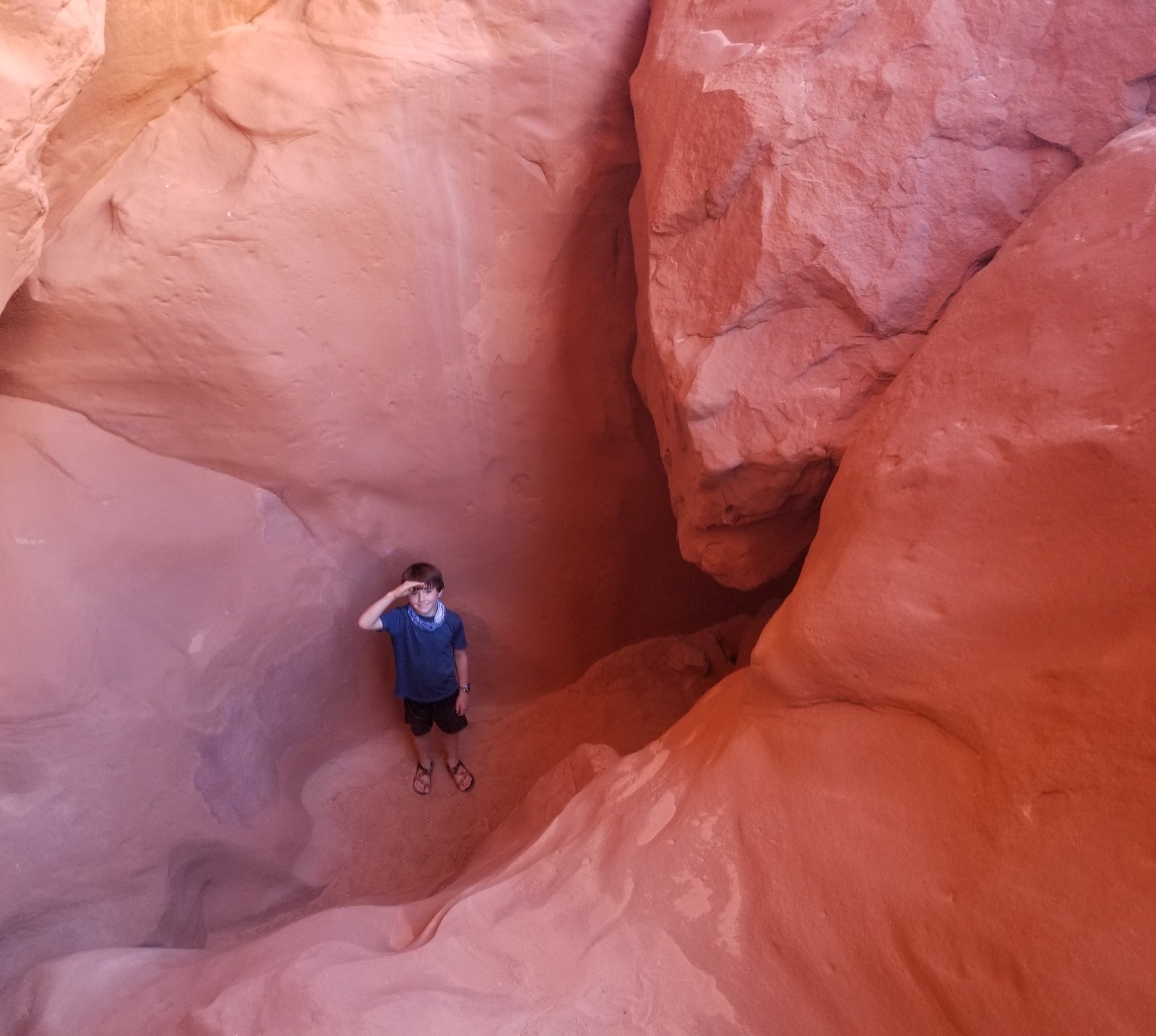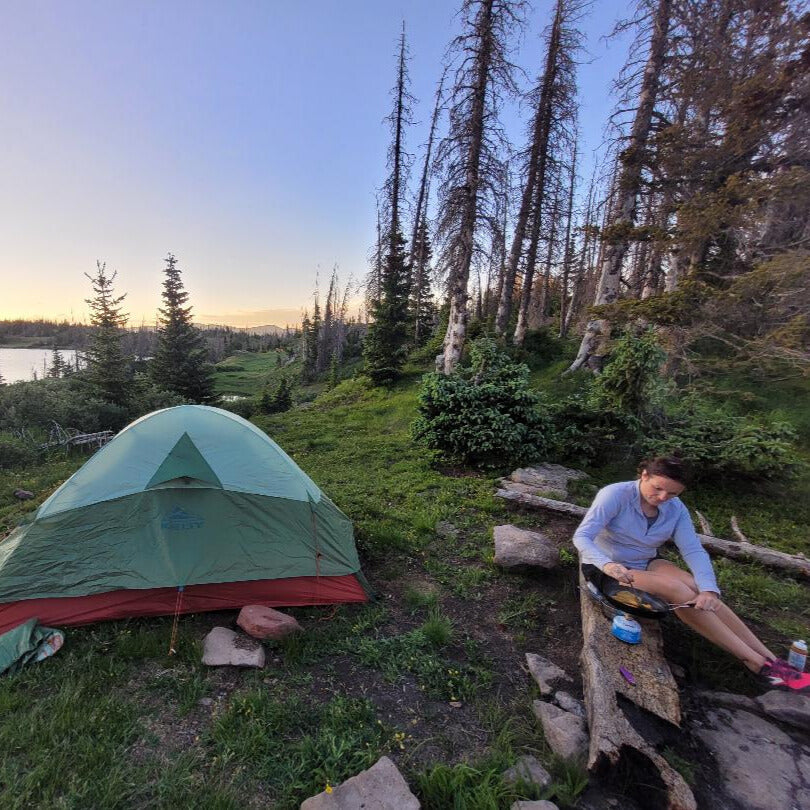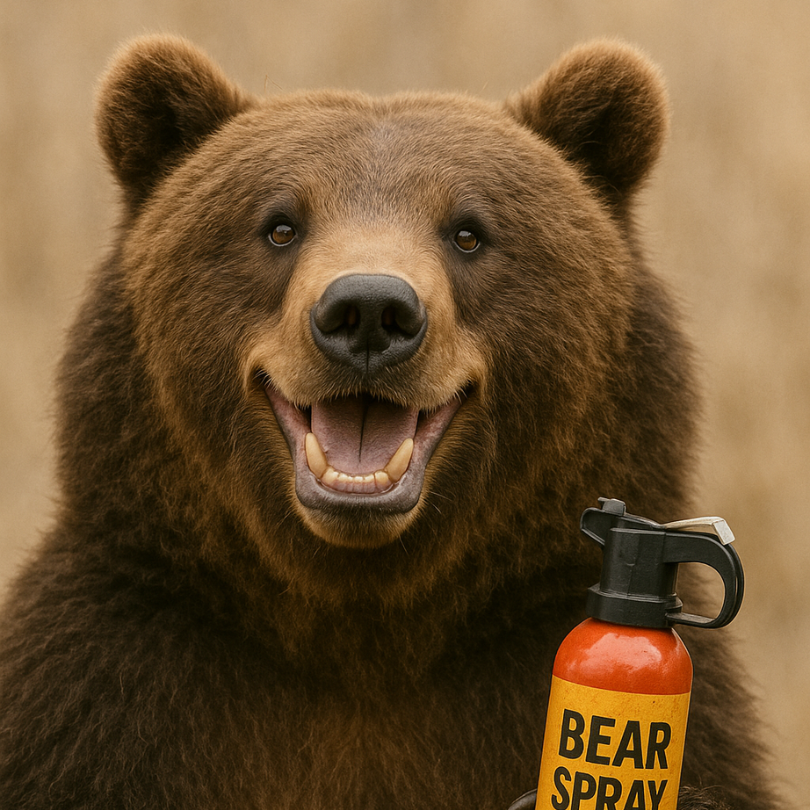Your Cart is Empty
Mon - Sat 10AM to 6 PM - Sunday 12PM-5PM

Easy ways to stretch the camping season...
The desert, with its expansive landscapes, towering red rock formations, and intricate slot canyons, is a backpacker's paradise. This unique environment, however, requires careful planning and the right gear to ensure a safe and enjoyable adventure. Here’s a comprehensive guide to what you need for desert and canyon backpacking.
Utah’s desert regions, including famous spots like Zion National Park, Bryce Canyon, Arches, and Canyonlands, offer some of the most stunning and otherworldly landscapes in the United States. The terrain varies from vast open spaces and rugged mountains to narrow, twisting canyons that beg to be explored. The isolation and beauty of these areas provide a profound sense of peace and adventure.
There are two things to keep in mind when gearing up for backpacking in the desert: 1) While the cost of the gear can be expensive up front, once you have it, backpacking is basically free; and 2) buying used gear from the Durango Outdoor Exchange can be a very smart way to get your gear.
Here is why buying used gear is so smart: High-end camping gear is not cheap, but it does depreciate quickly, meaning you can get a great tent, backpack, or stove for about what you’d pay for a department store version, only the quality is vastly better. Further, most camping gear is lightly used—even hard core backpackers may only be out a dozen nights a year, meaning that you are getting great, lightly used gear for a fraction of what you pay new.
But where to get good used gear in Durango? TheDurango Outdoor Exchange is packed to the rafters with seasonally appropriate new and used gear, including everything you need for backpacking in the desert. Stop by or call today.

When spending one night (or many) in the backcountry, a warm dinner at night and hot beverage in the morning can make the difference. That invariably involves using a stove of some sort–but which one?
Stove technology has been around for decades, but new tech is making them lighter, more efficient, and more dependable than ever before. Here’s a rundown of the different kinds of backpacking stoves:

If you are camping in bear country, or in any place where food storage is a concern, you should strongly consider using a bear canister–a storage system that is built to keep bears out of your food. And in some places, particularly parks in California, Montana, Colorado, and Washington,backcountry campers are required to have and use bear canisters.
While you may get lucky by hanging your food in a sack from a tree, this is not permitted in many areas and virtually impractical in many alpine anddesert backpacking zones. Bear canisters are the preferred method for storing food and other smelly items, but there are many kinds to be aware of. Let’s look at them in more detail.

For many hikers, summiting one of Colorado’s 14,000-foot peaks is a lifetime achievement. Others make it their entire personality, working for years and even decades to climb all of them. Some make a goal of climbing them all in a single season while others try to ski them all.
The problem with climbing 14ers for many people is that they are difficult–and we’re not just talking about the thin air. Of the 58 in Colorado, about one-third entrail considerable exposure and require skilled route-finding and ascent/descent skills. About half have either moderate or considerable challenges. Just eight are considered “easy.”
Hikers looking to summit a 14er near Durango will find four that rank generally as easy or the easy end of moderate. They are all in the same two canyons and can be climbed by someone with decent fitness, good shoes, and a penchant for waking up early. The roads to access all these peaks are part of the Alpine Loop and can be driven from Silverton in a four-wheel drive such as a Tacoma, but are generally not in all-wheel drives like Subarus.
Ready? Here goes!